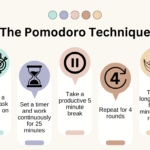Debt is more than just a math problem. It is an emotional weight.
It’s the pit in your stomach when you open the mailbox. It’s the arguments with your spouse in the kitchen. It’s the feeling of working 40 hours a week only to see your paycheck vanish instantly to Visa, Mastercard, and a car loan, leaving you with nothing to show for your effort.
If you are tired of feeling trapped, you don’t need a complex spreadsheet. You need a battle plan.
Enter the Debt Snowball.
This is the method that has helped millions of people pay off billions of dollars in debt. It works not because it is the most mathematically efficient way to pay off debt (it actually isn’t), but because it modifies your behavior.
In this comprehensive guide, we will break down exactly how the Debt Snowball works, why it beats other methods for most people, and how you can start your journey to debt freedom today.

Part 1: What is the Debt Snowball?
The Debt Snowball is a debt reduction strategy where you pay off your debts in order of smallest balance to largest balance, regardless of the interest rate.
The concept is simple: You knock out the smallest debt first. Then, you take the money you were paying on that debt and roll it into the next smallest debt. As you pay off each debt, the amount of money you have available to attack the next one grows—just like a snowball rolling down a hill, gathering size and speed.
The Core Rules
- List your debts: List everything you owe (except your mortgage) from smallest balance to largest.
- Pay minimums: Make the minimum monthly payment on all debts except the smallest one.
- Attack the smallest: Throw every single extra dollar you can find at the smallest debt.
- Roll it over: Once the smallest debt is gone, take its minimum payment (plus the extra money) and apply it to the second smallest debt.
- Repeat: Continue until you are debt-free.
Part 2: The Great Debate: Snowball vs. Avalanche
Whenever you talk about the Debt Snowball, a math nerd will inevitably interrupt you to say: “Actually, the Debt Avalanche is better.”
Let’s address this immediately.
The Debt Avalanche Method involves paying off debts with the highest interest rate first.
- The Math: By attacking the highest interest rate (say, a 24% credit card) before a lower interest rate (say, a 5% student loan), you mathematically save more money on interest over the life of the loan.
The Debt Snowball Method involves paying off the smallest balance first.
- The Psychology: By attacking the smallest balance (say, a $500 medical bill), you can pay it off in one month.
Why Snowball Usually Wins
On paper, the Avalanche wins. In the real world, the Snowball wins. Why? Because personal finance is 20% head knowledge and 80% behavior.
If you are on a diet and you don’t see the scale move for three months, you will quit. You need a “quick win” to stay motivated. When you pay off that first small debt completely, you get a hit of dopamine. You hold the final statement in your hand and see “$0.00.” You think, “Wait, I can actually do this.”
That hope is more powerful than saving 2% on interest. The best debt payoff plan is the one you actually stick to.
Part 3: Step-by-Step Guide to Executing the Snowball
Let’s look at a concrete example to see how the numbers roll over.
Imagine you are an average person with the following non-mortgage debts:
- Medical Bill: $500 balance ($50/mo minimum payment)
- Credit Card: $2,500 balance ($75/mo minimum payment)
- Car Loan: $7,000 balance ($350/mo minimum payment)
- Student Loan: $12,000 balance ($150/mo minimum payment)
Total Debt: $22,000 Total Monthly Minimums: $625
Now, let’s say you budget hard and find an extra $500 per month to throw at your debt. Your total “debt shovel” is now $1,125 ($625 minimums + $500 extra).
Phase 1: Attack the Medical Bill
- Target: Medical Bill ($500).
- Action: You pay the minimums on the Credit Card, Car, and Student Loan. You throw the $50 minimum + the $500 extra at the Medical Bill.
- Result: The Medical Bill is gone in one month.
- Psychological Win: You now have one fewer bill in the mailbox. You feel a spark of victory.
Phase 2: Attack the Credit Card
Now the “Snowball” rolls. You take the $550 you were paying on the Medical Bill and add it to the Credit Card minimum ($75).
- New Payment: $625/month attacking the Credit Card.
- Action: You pay $625/month on the $2,500 balance.
- Result: The Credit Card is gone in about 4 months.
- Psychological Win: You have paid off two debts in 5 months. You are on fire.
Phase 3: Attack the Car Loan
The Snowball grows larger. You take the $625 you were paying on the Credit Card and add it to the Car Loan minimum ($350).
- New Payment: $975/month attacking the Car Loan.
- Action: You attack the $7,000 car loan with almost $1,000 a month.
- Result: The car is paid off in about 7-8 months.
- Psychological Win: You own your car! No more payments. The cash flow in your budget feels massive now.
Phase 4: The Student Loan
The Snowball is now an Avalanche. You take the $975 and add it to the Student Loan minimum ($150).
- New Payment: $1,125/month attacking the Student Loan.
- Action: You attack the $12,000 balance.
- Result: Gone in roughly 11 months.
Total Time: In just over 2 years, you paid off $22,000. If you had just paid minimums, you would have been in debt for decades.
Part 4: How to Accelerate the Process (Finding the “Extra”)
The speed of your snowball depends entirely on the size of your shovel. The more money you can throw at the debt, the faster it vanishes. Here are three ways to find that “extra” money.
1. Budget Cuts (The Defense)
This is temporary austerity.
- Cancel subscriptions: Netflix, Spotify, Gym (run outside).
- Stop eating out: Brown bag your lunch. It saves ~$200/month.
- Cut the cable: Switch to a cheap internet-only plan.
- Goal: Squeeze $200-$400 out of your existing income.
2. Sell Things (The Quick Cash)
Look around your house. Do you have a guitar you never play? Designer purses? A bike gathering dust?
- Sell them on Facebook Marketplace or eBay.
- If you sell $1,000 worth of stuff, that might clear your first two smallest debts instantly. That is a massive morale booster.
3. Increase Income (The Offense)
You can only cut your budget so much. Eventually, you hit zero. But there is no limit to how much you can earn.
- Overtime: Can you pick up extra shifts at work?
- Side Hustles: Drive Uber, deliver pizza, freelance on Upwork, or walk dogs on Rover.
- Part-time job: Delivering pizzas 3 nights a week can bring in an extra $1,000/month. If you throw that at the debt, you cut your payoff time in half.
Part 5: Staying Motivated Through the “Murky Middle”
The beginning of the Snowball is exciting (quick wins!). The end is exciting (freedom!). The middle is hard. This is when you are tackling the large student loan or the car note. It feels like a grind.
Visuals are key. Humans are visual creatures. We need to see progress.
- The Debt Chain: Make a paper chain (like in grade school). Each link represents $100 of debt. Hang it in your living room. Every time you pay off $100, cut a link. Watching the chain get shorter is incredibly satisfying.
- The Thermometer: Draw a giant thermometer on a poster board. Color it in red as you pay down the debt. Put it on your fridge.
- The “Debt Scream”: Watch videos of people doing their “Debt Free Scream” on YouTube. It reminds you that normal people can do this.
Part 6: Frequently Asked Questions
Q: Should I include my house in the Snowball? A: No. Your mortgage is a long-term debt (15-30 years). It is too big for the Snowball method. Pay off all consumer debt (cards, cars, loans) first. Then, build your emergency fund and start investing. Attack the mortgage later in your financial journey (often called “Baby Step 6”).
Q: What if I have a 0% interest loan? A: Include it in the snowball order based on its balance. Don’t worry about the interest rate. Just kill the debt. The goal is to free up cash flow, not to play the interest rate arbitrage game.
Q: What if two debts have the same balance? A: In this specific tie-breaker scenario, pay off the one with the higher interest rate first.
Q: Should I pause my retirement investing while paying debt? A: This is controversial. The Dave Ramsey method says Yes, pause all investing (even the employer match) to focus 100% intensity on the debt. The logic is that if you are “gazelle intense,” you will be out of debt in 18 months and can catch up later. Alternative View: Some financial experts say you should always take the employer match because it is free money (100% return). My Advice: If your debt is high-interest (Credit Cards), pause investing. The 25% interest is killing you. If your debt is low interest (3% student loan), you might keep the match. But remember: Focus is a superpower. Trying to do too many things at once often leads to failure at all of them.
Part 7: Life After Debt
Imagine a month where no money leaves your bank account for payments. No car payment. No student loan payment. No Visa bill. Your paycheck hits your account, and you keep all of it.
What could you do with that money?
- You could save for a down payment on a house in a year.
- You could invest and retire a millionaire.
- You could give generously to causes you care about.
- You could travel without guilt.
The Debt Snowball is not easy. It requires sacrifice. You will be the weird friend who says “I can’t go out to dinner, I’m broke” (even though you earn good money). You will drive an old car while your friends drive new leases.
But “live like no one else now, so later you can live like no one else.”
The sacrifice is temporary. The freedom is permanent. List your debts. Write them down tonight. It starts with the first step.
















